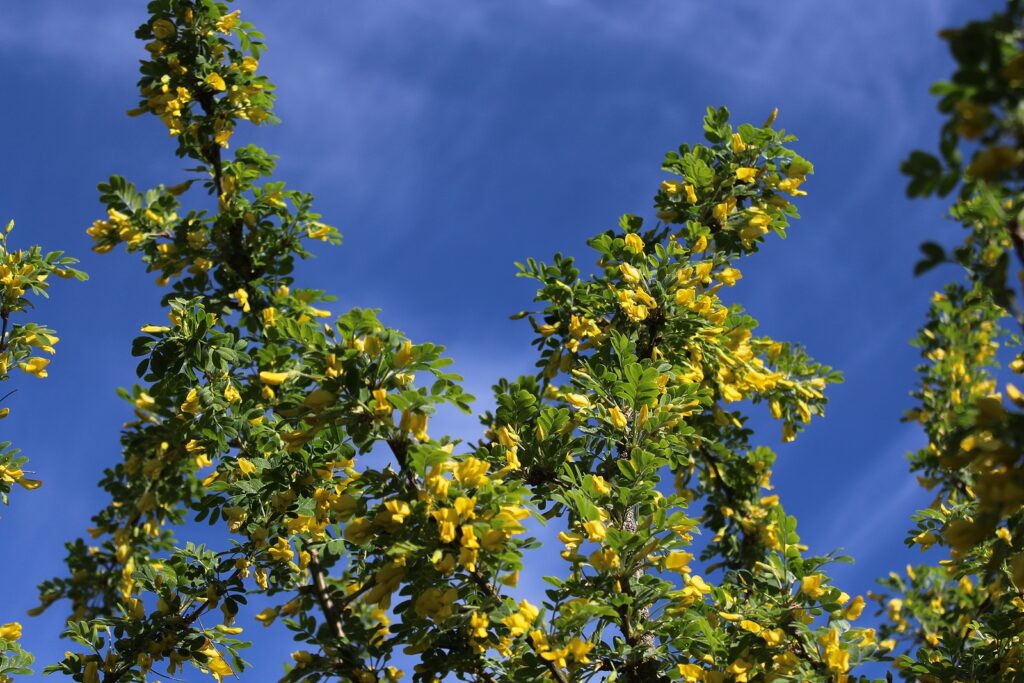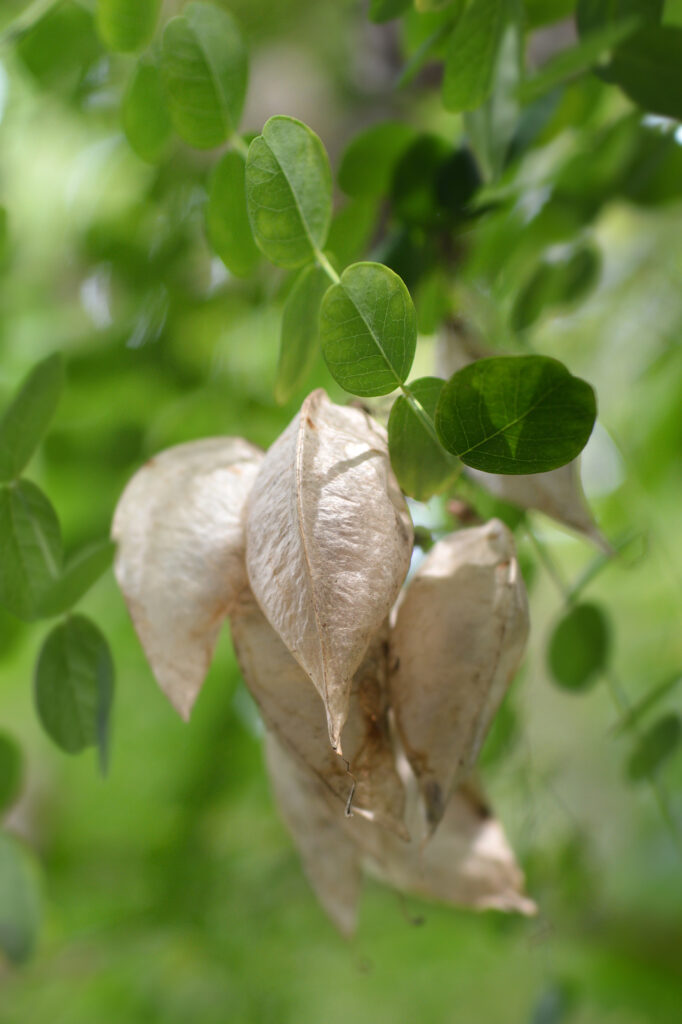Colutea —commonly called bladder senna–is a vigorous deciduous shrub grown for its pea-like flowers that are yellow or orange-brown. Colutea is suitable for shrub borders or dry, sunny banks where the flowers will stand out.
Colutea grow in moderately fertile soil. They tolerate poor, dry soils, coastal conditions, and urban pollution. Don’t allow seeds to drop or Colutea can become weedy.
Colutea is a genus of about 25 species. They are native to dry soils in woodland and thickets from Southern Europe to Turkey, Iran, and Central Asia to the Himalayas.

Get to know Colutea
- Plant type: Deciduous shrub
- Growing zones and range: Zones 6 to 9
- Hardiness: Hardy to Zone 6
- Height and width: 6 to 10 feet (1.8-3m) tall and wide depending on the variety
- Growth rate: Fast
- Form and habit: Erect and spreading
- Foliage: Each leaf is composed of 9 to 13 leaflets with an overall length of 2-4 inches (5.1-10.2cm), following by inflated bronze seedpods about 2 inches (5.1cm) long
- Flowers: Pea-like yellow flowers borne in clusters of three to eight that spring from leaf joints
- Fruits: Bladder like fruits follow flowers
- Bloom time: Late spring to fall
- Uses: Screens, shrub border
- Common name: Bladder senna
- Botanical name: Colutea
- Family name: Fabaceae
- Origin: The Mediterranean to the Himalayas
Where to plant Colutea
- Plant Colutea in full sun.
- Plant Colutea in humusy, well-drained soil.
When to plant Colutea
- Set Colutea plants out to the garden in early spring.
- Sow seeds in autumn or spring.

Planting and spacing Colutea
- Space Colutea 6 to 10 feet (2m-3m) apart.
- Sow seed 1/4 inch deep in evenly prepared soil.
How to water and feed Colutea
- Colutea grows best in soil that is evenly moist but not wet.
- Fertilize Colutea with an all-purpose, organic fertilizer in spring.
How to care for Colutea
- Colutea can get gangly, so prune stems back one third to one half in early spring to encourage branches.
- Trimming should be done before new growth starts so that the current season’s stems can bear flowers.
Colutea pests and diseases
- Powdery mildew, rust, and root rot sometimes occur.

Colutea propagation
- New Colutea plants can be started from softwood cuttings of young growth in late spring or early summer, from semi-hardwood cuttings or more mature growth in mid- or late summer, or from hardwood cuttings of dormant leafless growth in late fall or winter.
- Sow seeds in containers in a cold frame in autumn or spring.
Colutea varieties to grow
- Colutea arborescens, bladder senna: vigorous shrub grows to 10 feet (3m) tall and wide; produces 3 to 8 yellow flowers in racemes over a long period in summer; flowers are followed by translucent pods.
- C. x media: vigorous bushy shrub grows to 10 feet (3m) tall and wide; with blue-green leaves; produces orange-brown flowers from early to late summer; flowers are sometimes flushed yellow in the centers; greenish-brown bods follow the flowers.
- C. orientalis: bushy, rounded shrub grows 6 feet (1.8m) tall and wide with bluish-green leaves; produces 2 to 5 copper-red flowers with yellow markings followed by pale brown translucent seed pods.















